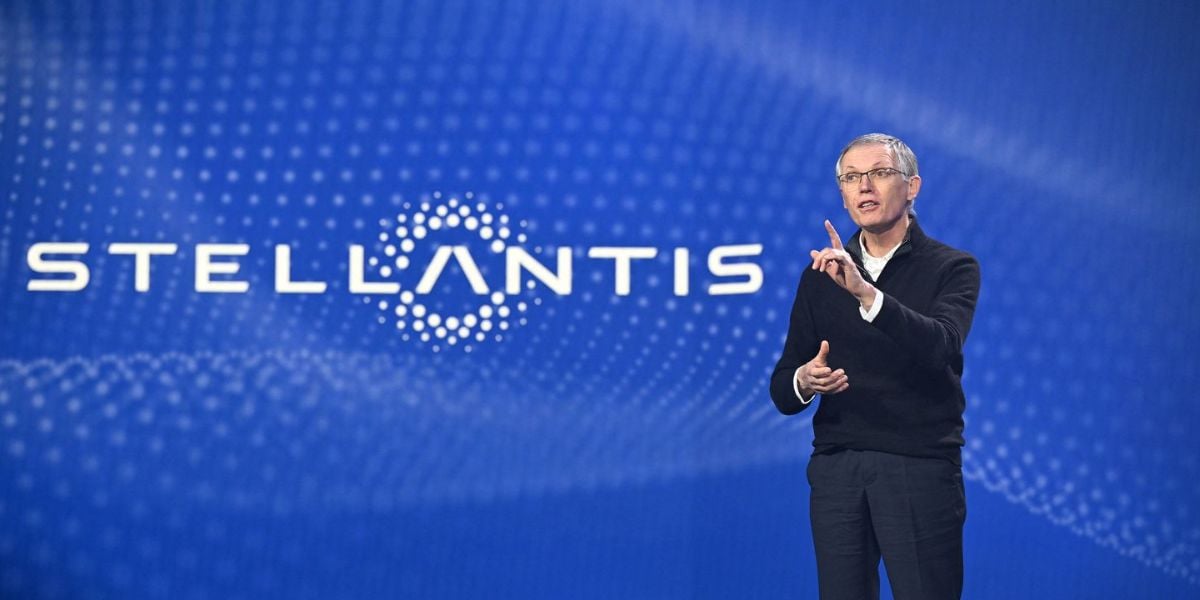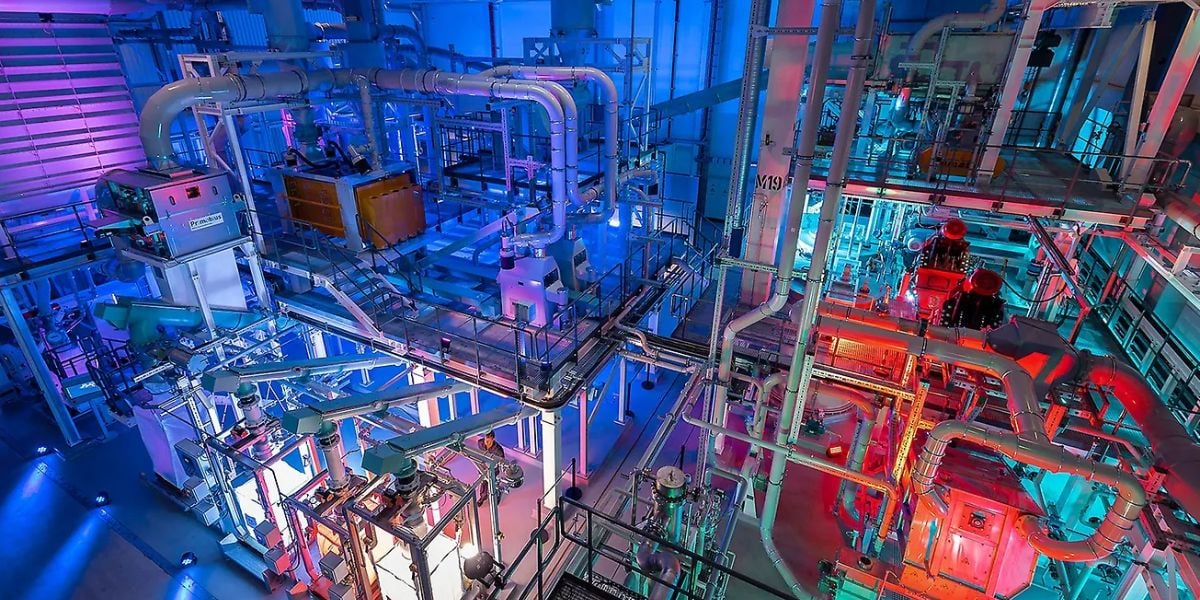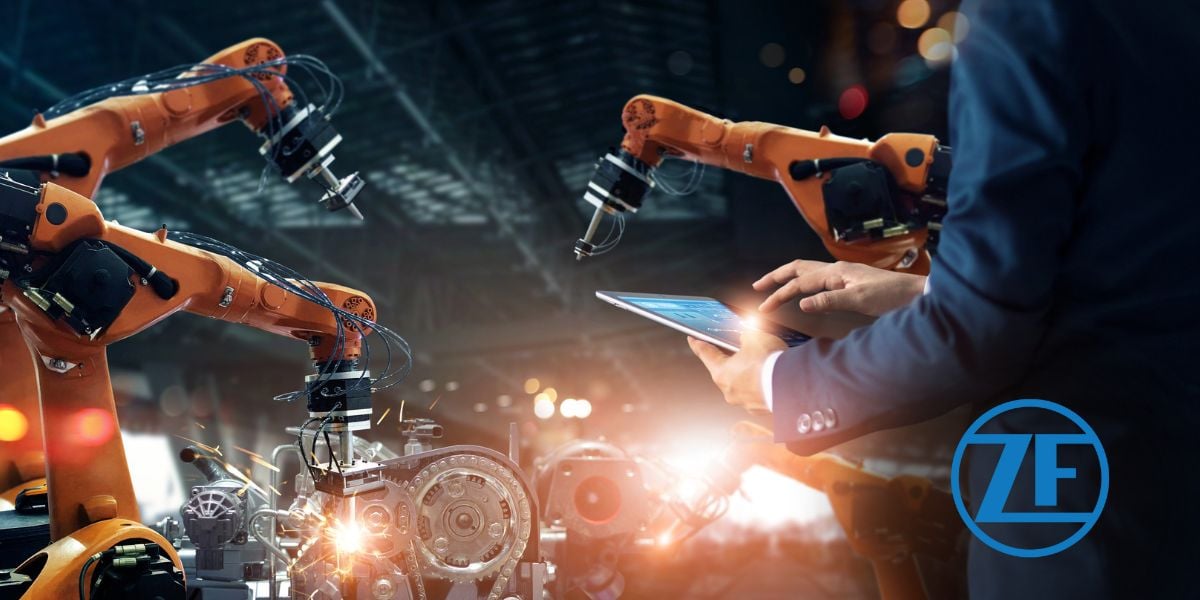Rematec Amsterdam 2025 meets Edward Xu
Rematec Amsterdam 2025 meets Edward Xu, Sales Agent in China for Rematec Asia.
How is the automotive remanufacturing industry evolving in China and other parts of Asia? Are there any key trends driving its growth?
The automotive remanufacturing industry is experiencing significant growth and evolution in China and other parts of Asia, driven by various key trends.
Evolution in China
Rapid Market Growth. China's automotive remanufacturing market is expected to grow at an impressive 7% CAGR from 2025 to 2030. The country has a substantial vehicle stock of 365 million units, and its repair and maintenance market are valued at €128 billion.
Government Support
The Chinese government has been actively promoting remanufacturing through policies such as the "14th Five-Year Plan," which emphasizes the remanufacturing of EV batteries, motors, and power electronics to reduce waste and promote sustainability. Additionally, the Circular Economy Law and other regulations provide a supportive framework for the industry.
Technological Advancements
Continuous improvements in remanufacturing technologies have enhanced the quality and reliability of remanufactured parts, making them more competitive with new parts. This has led to increased consumer acceptance and market demand.
Focus on EV Components
With the rapid growth of the electric vehicle (EV) market, there is a rising demand for remanufactured lithium-ion batteries and other EV components. This trend is further supported by the government's push for EV development and the need to reduce reliance on costly raw material imports. Industry Collaboration. Joint ventures between Chinese groups and foreign OEMs are becoming more common, focusing mainly on EVs. This collaboration helps in technology transfer and market expansion.
Evolution in Other Parts of Asia
Growing Demand in India and Southeast Asia. The remanufacturing industry is also gaining traction in countries like India, Japan, and Southeast Asia. Increasing vehicle ownership and cost-conscious consumers are driving the demand for remanufactured components. For example, India's large and growing automotive market presents significant opportunities for remanufacturers.
Japan's Role
Japan has a well-established automotive industry and is known for its high-quality manufacturing practices. The country is increasingly adopting remanufacturing as a way to promote sustainability and reduce waste. Japanese automakers and suppliers are also exploring opportunities in the remanufacturing market both domestically and in other Asian countries.
Southeast Asia's Potential
Countries in Southeast Asia, such as Thailand, Malaysia, and Indonesia, have growing automotive markets and are becoming important regions for remanufacturing. The region's strategic location and relatively lower labor costs make it an attractive destination for remanufacturing operations.
Key Trends Driving Growth
Sustainability and Environmental Concerns. The global focus on sustainability and resource conservation has boosted the popularity of remanufactured parts. Remanufacturing reduces the need for raw material extraction and manufacturing energy consumption, aligning with environmental goals. For example, remanufacturing can save up to 90% of materials and energy compared to producing new parts.
Cost Savings
Remanufactured parts are often significantly cheaper than new parts, making them an attractive option for cost-conscious consumers and businesses. This is particularly relevant in regions like Asia, where the cost of new automotive parts can be prohibitive for many vehicle owners.
Technological Improvements
Advancements in remanufacturing technologies have improved the quality, reliability, and range of remanufactured components. This has expanded the market for remanufactured parts and increased consumer confidence in their performance.
Expansion of the Aftermarket
The growing automotive aftermarket, driven by the increasing average age of vehicles on the road, has further fueled the demand for remanufactured components. As vehicles age, the need for repairs and maintenance increases, creating a larger market for remanufactured parts.
Government Regulations and Incentives
Governments in Asia and around the world are implementing regulations and incentives to promote remanufacturing. These measures include setting quality standards, offering subsidies, and fostering international cooperation. For example, China's government has been actively supporting the development of the remanufacturing industry through various policies and initiatives.
What are the biggest challenges that remanufacturers face in the Asian market, particularly in terms of regulations, supply chains, and consumer acceptance?
Remanufacturers in the Asian automotive market, especially in China, face several significant challenges in terms of regulations, supply chains, and consumer acceptance.
Policy Uncertainty and Inconsistency
In China, the lack of a comprehensive national remanufacturing industry development plan and frequent policy changes create uncertainty, hindering investment. For example, remanufactured parts are sometimes classified as waste, which can block imports and exports and restrict international trade.
Stringent Quality and Safety Standards
While high standards are essential, the inconsistent application and frequent updates of these standards can complicate compliance for remanufacturers. Additionally, regulations mandating the destruction of major components limit access to used parts.
Data Security and Localization Requirements
In the context of connected and autonomous vehicles, regulations such as China's Personal Information Protection Law and Data Security Law demand localization of sensitive vehicle data, adding complexity to operations.
Core Parts Availability and Quality
Remanufacturers rely on the availability and quality of used parts ("cores"). However, the supply of these parts can be unpredictable, and their quality may vary significantly. This inconsistency can affect production schedules and final product quality.
Geopolitical and Trade Tensions
The ongoing geopolitical tensions and trade policies, such as the U.S. tariffs on Chinese EVs, have disrupted global supply chains. This has led to increased costs and complexities for remanufacturers sourcing parts from or exporting to affected regions.
Logistics and Infrastructure
Developing robust return logistics and recycling infrastructure is crucial for the remanufacturing industry. However, the current infrastructure in many Asian countries is underdeveloped, creating bottlenecks. For example, the recycling of scrapped automobiles in China faces challenges due to poor laws and fragmented practices. Awareness and Perception. In China and other parts of Asia, consumer awareness of remanufactured products is relatively low compared to Western markets. Many consumers prefer new or cheaper alternatives, limiting the market demand for remanufactured products.
Quality and Trust Issues
Inconsistent quality standards and the presence of unqualified products in the market erode consumer trust in remanufactured products. This is further exacerbated by the chaotic market conditions, where reputable remanufacturers often face competition from low-quality, counterfeit products.
How do government policies and incentives in China impact the development of remanufacturing compared to Europe?
Government policies and incentives in China have played a crucial role in shaping the development of the remanufacturing industry, particularly in the automotive sector. These policies have both similarities and differences compared to those in other global markets.
Strategic Sector Designation
China has designated remanufacturing as a strategic sector within its circular economy framework. This has led to the development of an enabling policy framework that supports the industry’s growth. For example, the Chinese government has implemented policies such as the "Swap the Old for Remanufacturing" program, which provides subsidies to enterprises that collect end-of-life vehicles and components for remanufacturing. This has increased collection rates and incentivized consumers to buy remanufactured products by offering a 10% discount.
The government has also set ambitious targets, such as aiming for over 100 industrial zones to support remanufacturing activities. These zones facilitate information exchange and best practices among enterprises.
Financial and Regulatory Incentives
Financial incentives have been a key driver. Subsidies for collecting end-of-life vehicles and components have increased the supply of cores for remanufacturing. Additionally, regulatory changes, such as the 2019 revision of the Regulation on Scrapped Vehicles, expanded the range of recoverable parts, further boosting the industry. Technological Advancement and Standards
The Smart Remanufacturing Action Plan (2018-2020) provided funding for skills development and R&D, and introduced standards to guarantee the functionality and quality of remanufactured parts. This has helped improve the quality and reliability of remanufactured products, increasing consumer acceptance.
Comparison with Europe
European countries like France and Germany have implemented policies to promote remanufacturing as part of broader industrial and environmental strategies. For example, France’s New Industrial France strategy and Germany’s Industry 4.0 initiative both include measures to support remanufacturing. The EU has also been active in setting standards and regulations to ensure the quality and safety of remanufactured products, similar to China’s approach.
What role do international trade shows like RAI Amsterdam’s events play in connecting Asian remanufacturing companies with global opportunities?
International trade shows like RAI Amsterdam’s events play a significant role in connecting Asian remanufacturing companies with global opportunities.
Global Audience
Events like Rematec Amsterdam attract professionals from over 77 countries. This provides Asian remanufacturers with a platform to showcase their products and services to a global audience, including potential customers, partners, and investors.
Face-to-Face Interaction
Trade shows facilitate direct communication between Asian companies and international stakeholders. For example, Rematec Asia 2019 enabled European, North American, and Southeast Asian participants to meet Chinese remanufacturers and explore market entry opportunities.
Latest Trends and Innovations
Trade shows like Rematec 2025 offer insights into cutting-edge trends, such as sustainable manufacturing, electric vehicle (EV) innovations, battery technology, and reverse logistics. This helps Asian remanufacturers stay updated on global developments and integrate new technologies into their operations.
Expert Presentations and Workshops
Events feature presentations and workshops by industry experts. For example, the Rematec Congress have explored critical topics like the circular economy, AI in robotics, and battery remanufacturing. Asian companies can leverage this knowledge to enhance their capabilities and competitiveness.
Strategic Partnerships
Trade shows provide an ideal environment for forging strategic partnerships. Asian remanufacturers can collaborate with international companies to access new markets, technologies, and resources. For example, Rematec Asia 2019 facilitated valuable business meetings between local and international remanufacturing ventures.
Market Entry Strategies
Events like Rematec help international companies understand the local market conditions, regulatory environment, and consumer preferences in Asia. This is crucial for developing effective market entry strategies.
Demonstrating Quality and Expertise
Asian remanufacturers can use trade shows to demonstrate their technological capabilities and product quality. This helps build trust with international buyers and counters any preconceived notions about the quality of remanufactured products.
Certification and Standards
Events often feature discussions on industry standards and certifications. Asian companies can learn about global standards and align their operations to meet these requirements, enhancing their credibility.
How do you see the future of remanufacturing in Asia, especially with the rise of electric vehicles and battery reuse initiatives?
The future of remanufacturing in Asia, particularly with the rise of electric vehicles (EVs) and battery reuse initiatives, is poised for significant growth and transformation.
Increasing EV Adoption
The steady growth of the EV market in Asia presents substantial opportunities for remanufacturing. With millions of new EVs hitting the roads each year, the demand for remanufactured parts, especially batteries, is expected to rise.
Market Entry for New Players
The remanufacturing market for EV components, such as batteries and electric motors, is still developing. This provides an opportunity for new companies to enter the industry.
Industry 4.0 Integration
The adoption of advanced technologies such as automation, artificial intelligence, and the Internet of Things (IoT) is transforming remanufacturing processes. These technologies enhance efficiency, quality control, and supply chain transparency.
Battery Remanufacturing
The process of remanufacturing lithium-ion batteries (LIBs) involves restoring them for reuse in their original applications. This includes inspection, disassembly, replacement of damaged cells, and reassembly. Advanced techniques are being developed to optimize this process.
Share your remanufacturing stories with us
Do you have an innovation, research results or an other interesting topic you would like to share with the remanufacturing industry? The Rematec website and social media channels are a great platform to showcase your stories!
Please contact our Brand Marketing Manager.
Are you an Rematec exhibitor?
Make sure you add your latest press releases to your Company Profile in the Exhibitor Portal for free exposure.



